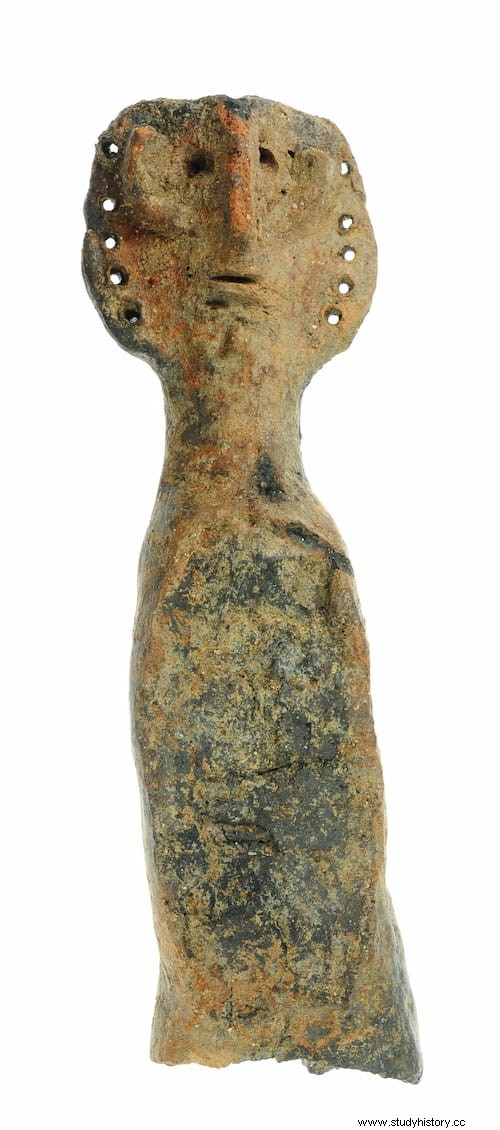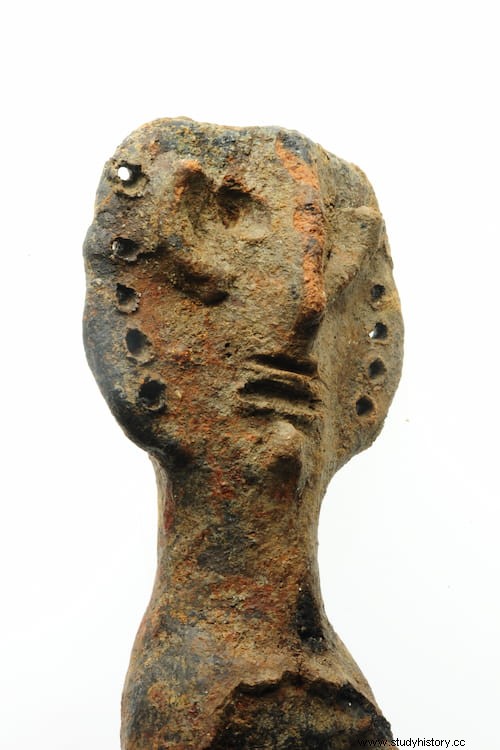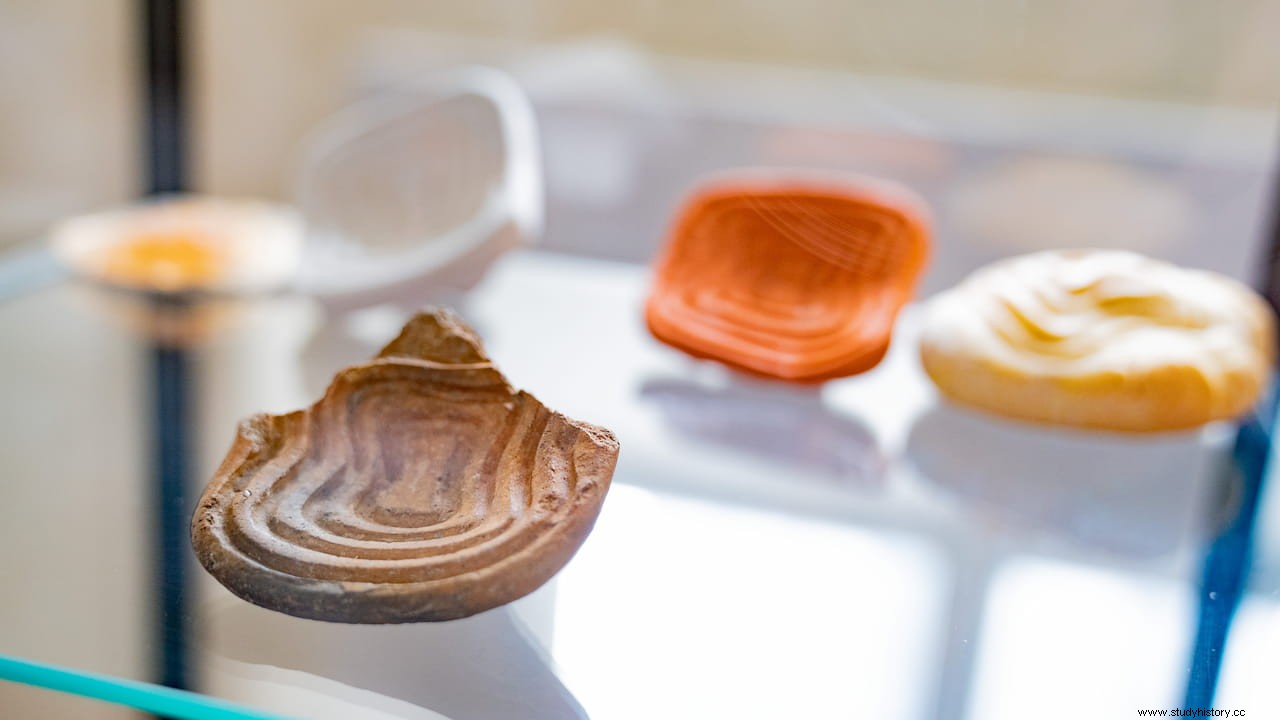It is possible that people worshiped the small statuette as a water deity between 2,800 and 2,500 years ago. Her function as a cult object with a strong connection to water is at least suggested by the place where she was found.
Archaeologists discovered the ceramic figure in a prehistoric ravine that could have served to provide water to the inhabitants of a nearby settlement from the time of Hallstatt, between the 8th and 6th centuries BC, on the edge of the Unkenbach plain, in what which today is Mönchstockheim, in the district of Schweinfurt.
It is currently being examined at the Bavarian State Office for Monument Conservation, where it has also been carefully cleaned and dried. The sculpture's finely modeled face is striking:the eye sockets, nose, lips and chin are clearly visible.

It is only 19 centimeters high, several thousand years old, delicately crafted from clay and for this very reason it is the star of the Bavarian State Office for Monument Conservation. The water goddess proves that Bavaria was already a land of culture almost 3,000 years ago , explains the Minister of Art Markus Blume.
It is conceivable that the people of the time regarded this special scenic spot as a sacred place and the small statuette served as a ritual offering or even attributed magical powers to it , adds conservator general Prof. Mathias Pfeil, head of the Bavarian State Office for Monument Conservation.

The excavations carried out took place within the framework of the construction works of the Mönchstockheim bypass on state road 2275. At the site, the archaeological team was able to recover not only the small clay figure, but also numerous fragments, ceramic tools from bone and a clay seal well preserved and also very rare.
The fact that the ceramic finds have not been eroded by water indicates that they were not washed to the site of their discovery, but were deliberately placed in the old ditch. In addition, the lime precipitation testifies to the existence of an ancient spring in the vicinity.

The vessel fragments found can be clearly assigned to the Hallstatt period. Therefore, they date from the 8th to the 6th century BC. However, until now there have been no finds that can be compared to the statuette.
Figures of this type made of clay are known from the western Black Sea region, for example, and date back to the fifth millennium BC. However, the other finds point to a much younger date for the statuette. All this leaves a lot of room for future interpretation , says Dr. Stefanie Berg, curator of archaeological monuments in charge of the Bavarian State Office for the Conservation of Monuments.
The sculpture is 19 centimeters tall; in its original, complete state, it was probably four inches longer. Since the legs are only rudimentary and the front surface of the torso is missing, the body shape does not provide any information about sex. The sides of the head, pierced with holes, could represent a cap decorated with metal rings. This type of headdress is attributed to women.

The clay seal pattern from the same site is also extremely unusual. Since its printing surface is curved inwards, experts assume that it was used to decorate organic materials, such as bread dough. Corresponding experiments carried out by scientists from the Bavarian State Office for the Preservation of Historical Monuments with a replica also speak in favor of this.
